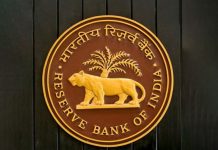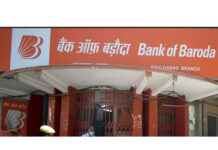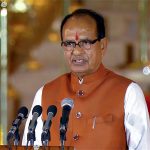As the Reserve Bank of India’s Monetary Policy Committee (MPC) begins its two-day meeting in Mumbai, economists remain divided over the extent of a potential rate cut in the upcoming June 6 policy announcement.
While some are advocating for a sharper 50 basis point (bps) reduction to provide a stronger boost to growth, others are urging a more cautious 25 bps cut, citing the need to maintain macroeconomic stability amid ongoing global uncertainties.
The differing views reflect the current economic landscape. Retail inflation has eased significantly, dipping below the 4% mark, while domestic growth prospects remain strong. At the same time, risks tied to global monetary policy trends, the impact of the monsoon on food inflation, and volatile capital flows continue to weigh on the central bank’s decision-making.
Debopam Chaudhuri, Chief Economist at Piramal Group, is among those pushing for a bolder move. In an interview with ANI, he said, “The MPC should consider a larger-than-usual 50 bps rate cut this time. Rate transmission only gained traction when the policy repo rate reached 6% in April. Prior to that, tight liquidity had kept market yields elevated. A larger cut now could help compensate for lost time and deliver a more meaningful push to economic growth.”
Chaudhuri also highlighted favorable external conditions, particularly the outlook for U.S. monetary policy. “With the Federal Reserve likely to start cutting rates soon, concerns over narrowing yield differentials between the U.S. and India will likely ease. Lower borrowing costs will strengthen domestic growth and continue to position India as an attractive investment destination, regardless of the spread with U.S. debt,” he added.
Taking a more measured approach, Sonal Badhan, Economics Specialist at Bank of Baroda, expects the central bank to reduce rates by 25 bps.
“We anticipate a 25 bps rate cut this week. Inflation has eased significantly and is expected to remain contained over the coming months. A normal monsoon forecast will help keep food inflation pressures in check,” Badhan told ANI.
She noted that the RBI is likely to revise its FY26 inflation forecast downward by around 10 bps, thanks to better-than-expected data from the first quarter. However, she does not see scope for a larger cut at this stage.
“A 50 bps cut seems unlikely for now, as the June move is essentially front-loading. The RBI is also likely to remain cautious until there’s clarity on the actual spatial distribution of monsoon rainfall. Additionally, with the U.S. Fed expected to maintain its current stance until September 2025, a sharp narrowing of interest rate differentials could affect FPI inflows and weigh on the rupee. A 25 bps cut is therefore a more prudent step,” she explained.
Supporting a dovish stance, M. Govind Rao, a member of the 14th Finance Commission and Chair of the Karnataka Regional Imbalances Redressal Committee, believes there is sufficient room for easing.
“With inflation well within the target range, the RBI has scope to reduce rates. Amid tariff-related uncertainties and global volatility, a rate cut would help stimulate investment,” Rao said.
As the MPC prepares to conclude its deliberations on Friday, June 6, all attention will turn to Governor Sanjay Malhotra’s statement at 10 a.m.
With inflation under control and a clear push for investment-driven growth, the RBI faces a delicate balancing act: providing policy support for the economy while safeguarding financial stability.


















